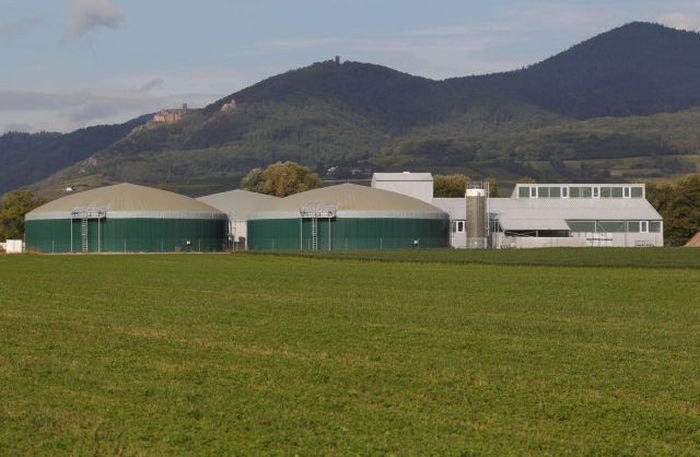|
|
Bees Make A Different Honey, France
|
Most bees are fuzzy and carry an electrostatic charge, which aids in the adherence of pollen. Female bees periodically stop foraging and groom themselves to pack the pollen into the scopa, which is on the legs in most bees, and on the ventral abdomen on others, and modified into specialized pollen baskets on the legs of honey bees and their relatives. Many bees are opportunistic foragers, and will gather pollen from a variety of plants, while others are oligolectic, gathering pollen from only one or a few types of plant. A small number of plants produce nutritious floral oils rather than pollen, which are gathered and used by oligolectic bees. One small subgroup of stingless bees, called "vulture bees," is specialized to feed on carrion, and these are the only bees that do not use plant products as food. Pollen and nectar are usually combined together to form a "provision mass", which is often soupy, but can be firm. It is formed into various shapes (typically spheroid), and stored in a small chamber (a "cell"), with the egg deposited on the mass. The cell is typically sealed after the egg is laid, and the adult and larva never interact directly (a system called "mass provisioning").
In New Zealand scientists discovered that three genera of native bees have evolved to open flower buds of the native mistletoe Peraxilla tetrapetala. The buds cannot open themselves but are visited by birds such as the tui and bellbird which twist the top of the ripe bud. That action releases a mechanism which causes the petals to suddenly spring open, giving access to the nectar and pollen. However, when observing the native bees in the Canterbury province in the South Island, the scientists were astonished to see the bees biting the top off the buds, then pushing with their legs, occasionally popping open the buds to allow the bees to harvest the nectar and pollen, and therefore aid in the pollination of the mistletoe which is in decline in New Zealand. Nowhere else in the world have bees demonstrated ability to open explosive bird-adapted flowers.
Visiting flowers can be a dangerous occupation. Many assassin bugs and crab spiders hide in flowers to capture unwary bees. Other bees are lost to birds in flight. Insecticides used on blooming plants kill many bees, both by direct poisoning and by contamination of their food supply. A honey bee queen may lay 2000 eggs per day during spring buildup, but she also must lay 1000 to 1500 eggs per day during the foraging season, mostly to replace daily casualties, most of which are workers dying of old age. Among solitary and primitively social bees, however, lifetime reproduction is among the lowest of all insects, as it is common for females of such species to produce fewer than 25 offspring.
The population value of bees depends partly on the individual efficiency of the bees, but also on the population itself. Thus while bumblebees have been found to be about ten times more efficient pollinators on cucurbits, the total efficiency of a colony of honey bees is much greater due to greater numbers. Likewise during early spring orchard blossoms, bumblebee populations are limited to only a few queens, and thus are not significant pollinators of early fruit.
|
|









